The Last Western? (Interview)
For their latest documentary, Western, co-directing brothers Bill and Turner Ross set their sights on the West Texas town of Eagle Pass to explore the current state of great American West. The Ross Brothers focus on Eagle Pass’s mayor, Chad Foster, a dynamic character who comes complete with a ten gallon hat along with local cattle broker Martin Wall and his 6-year-old daughter. They also venture across the Rio Grande to Piedras Negras, in Mexico and illuminate the relationship between these two small towns and how the Mexican drug cartels have imposed an atmosphere of danger over the area. The 13th Floor’s Marty Duda spoke to Turner Ross, who is Auckland for the New Zealand International Film Festival where both Western and their previous film, Tchoupitoulas, about three young brothers in New Orleans, are both screening.
Click here to listen to the interview with Western co-director Turner Ross:
Or, read a transcription of the interview here:
MD: You just had a screening at Eagle Pass In Texas?
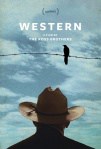 TR: We did, it was awesome! It’s kind of a bizarre thing, it’s taken so long to first of all just get the film together and then it took quite a while to arrange a screening down there but it was so worth it. We spent thirteen months of our lives living down in that community and then went back to our other world which is the making of these films and moving on to other projects. It was just so rewarding to finally take it home and re-live the experience there.
TR: We did, it was awesome! It’s kind of a bizarre thing, it’s taken so long to first of all just get the film together and then it took quite a while to arrange a screening down there but it was so worth it. We spent thirteen months of our lives living down in that community and then went back to our other world which is the making of these films and moving on to other projects. It was just so rewarding to finally take it home and re-live the experience there.
MD: What kind of reaction did you get from the folks after they saw it?
TR: It was very positive. A good chunk of the community came out of all stripes. But most of all it gave us an opportunity to show it to the people that were involved and the friends and family of those people. For the most part they aren’t art critics, they are just looking at it as something that reflects their community and reflects their experience and maybe even reflects their own life so to get a positive response from those people is more rewarding than anything.
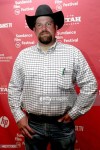
MD: Did Martin Wall see it? Or had he seen it before?
TR: Martin was there, but Martin was also at Sundance so that was wild, taking a steer wrestling cowboy to Park City, Utah, was pretty awesome.
MD: What did he make of the whole thing?
TR: He would say, ‘God! I hate this.’ But at the same time he’s having the time of his life. He’s walking up and down the street and you’ve got movie producers on cellphones and you’ve got Martin Wall on a cell phone and if you listen close he’s doing cattle deals rather than movie deals.
MD: He’s quite the character in the film, definitely a highlight. First of all, for folks who haven’t seen the film yet, how would you describe it to them?
TR: Western, is a portrait of the modern frontier. Western, is a portrait of a year in the lives of a border community in a time of change.
MD: I would imagine that a lot of people don’t realise that this type of existence even is still in existence. It seems to come from some kind of by gone era.
TR: It does and it sort of is. It’s something that we didn’t know much about until we versed ourselves in it, until we planted ourselves in that community and it happened to be really the crux point of a very decisive time in that region and we happened to be there documenting it with our heels dug in. It was fascinating and enlightening and in sort of the tropes of the genre it’s not a ‘black hat, white hat,’ place. It’s this liminal space in the world in which these communities have been intertwined so long as there have been people there. Whatever the forces may be, I think you can certainly isolate the federal government, the cartels, but they are dividing what seemingly was a very harmonious place and a very rich culture.
MD: What brought you to that specific town, those two towns actually?
TR: We had a conceit, naïve as it may be, just to see what would a non-fiction western be and what is the reality of the modern frontier. And you need to start with those concepts and you have to deconstruct them to see what it is even that you mean and that meant scouting the border and scouting that region, seeing what might speak to us, and the landscapes and the people of that region really did. There at the helm is sort of the patriarch, Mayor Chad Foster who was just an inexhaustible champion of their way of life, even in the hard times that he was presented with.
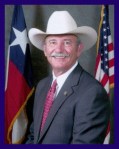
MD: And he wears a ten gallon hat so what more could you ask for.
TR: He cuts that figure, you know. He’s like a real life Gary Cooper.
MD: That’s fantastic. It seems to me that it’s one of those documentaries where going in to it you ended up with a different film or you didn’t even know maybe what film you were going to end up making but had to keep your eyes and ears and mind open as to how it was going to finish.
TR: Very much and I think you could say that about almost anything that we are making. You start with an idea, a premise, perhaps some images that you’d like to see and you take those preconceived notions and you have to just let them go. You can do as much thinking as it takes to get in place and get the ball rolling and then for us, if we are truly going to capture the feeling of that place and be able to convey it in a meaningful way, we have to be there ourselves which means being very open to the experience and allowing it to speak to us.
MD: One gets the feeling that there is an element of danger just living there. Was it dangerous making this film?
TR: We greatly enjoyed our experience and it was a rich thing and we came away with the film that we love dearly and relationships that we love dearly. That said, they were killing journalists at the time down there so there was certainly an element of reality. Everybody is proximable to that thing, so it’s not like we were special, to let that fear reign over that would have been fallacy. All the rest of those people are living their lives and we could too.
MD: The style of your filmmaking, of your documentary, it seems to have a very free form feel about it, like there is a camera on and it’s just shooting but at the same time there is also very stylistic shots and imagery being used. Is that something that you guys think about and talk about before you go in and shoot?

TR: We always talk about it, before, during and after. We certainly have strong aesthetic concerns, we certainly do our research and you can do a lot of the thinking ahead of time. When we move into a place, say when we moved into Eagle Path, Texas, we have walls covered with visual references and themes that we’re discussing and character trees that we are building and all of that goes into the back of our minds, so that when you walk out the door and you find yourself in those situations you have some background that you’re working from. But, as we have already talked about, you have to be open and allow those things to exist, you can’t force anything but in the end you also want cohesive work that makes sense.
MD: So what kind of stylistic references did you have up on your walls?
TR: A lot of photography, a lot of films. We watched an endless array of western films just to continue the conversation about what are those what are archetypes, what are those landscapes, what are the myths that we have built and in terms of the genre it is something that reflected the times in which it’s from. Stylistically it’s gone all over the place. There are some similarities that sort of course through. You might see some hats in all of them but really they can go any place from being art imitating life in the very beginning to speaking about the Vietnam War in the 60’s, it’s all over the place. Really, our references transcend that as well, we go into music and literature and try and stay open to anybody who is talking about the themes that we are interested in.
MD: Now your second film which I’m not even going to try and pronounce.. Tchoupitoulas is also playing at the film festival. So Western I guess is kind of the final in a trilogy, do you look at it that way?
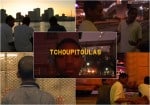 TR: I mean we talk about it by ourselves that way and it has become a conversation because people converse with us but it’s certainly not the final. Although, in terms of this we used a similar camera and a similar approach for the three films, they are very much regional Americana and are sort of a piece, the three films. Tchoupitoulas preceded Western in that and was very similar in which we had an approach and some ideas that we wanted to wrestle with, a series of images that we wanted to explore and another region of America which we felt deserved more than a surface treatment and we went and made a kind of, Pinocchio / Treasure Island night film in New Orleans with three little boys wandering around witnessing a very adult world.
TR: I mean we talk about it by ourselves that way and it has become a conversation because people converse with us but it’s certainly not the final. Although, in terms of this we used a similar camera and a similar approach for the three films, they are very much regional Americana and are sort of a piece, the three films. Tchoupitoulas preceded Western in that and was very similar in which we had an approach and some ideas that we wanted to wrestle with, a series of images that we wanted to explore and another region of America which we felt deserved more than a surface treatment and we went and made a kind of, Pinocchio / Treasure Island night film in New Orleans with three little boys wandering around witnessing a very adult world.
MD: Was it much of a different experience making the film in your own back yard as opposed to heading out to West Texas?
TR: It’s similar and different. When you really invest so much time like that, even in your own back yard you can see things that you didn’t know were there before and it’s a rather fascinating way to explore close to home or far and wide.
MD: I think I read somewhere that the next project you are working on is some kind of concert film with David Byrne, is that right?
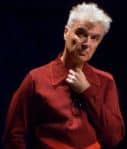 TR: It’s very much one of our films but also something very different. We approached it in our way and we were approached to do it because David had seen our films and really enjoyed our approach and he was composing this really bizarre series of concerts and thought it might be worth documenting so we worked with him for the last year, helping to build the event and then spent the last, God, it’s just three weeks ago we wrapped, we documented the events themselves so it’s kind of a bizarre concert film but it’s something more as well, we’ll see. Talk to us to in six months.
TR: It’s very much one of our films but also something very different. We approached it in our way and we were approached to do it because David had seen our films and really enjoyed our approach and he was composing this really bizarre series of concerts and thought it might be worth documenting so we worked with him for the last year, helping to build the event and then spent the last, God, it’s just three weeks ago we wrapped, we documented the events themselves so it’s kind of a bizarre concert film but it’s something more as well, we’ll see. Talk to us to in six months.
MD: How much can you tell me about the event that you filmed?
 TR: Well the event has been publicised pretty well, they got real good press out of it, it was called Contemporary Colour, and here were two shoes in Toronto and two shoes in Brooklyn. It was Byrne and nine other musical acts, St Vincent, Nelly Furtado, just across the board this amazing assemblage of musicians that David really liked and they were all performing individual pieces of music live, pieces of music for these competitive colourguard teams and it’s something that a lot of people don’t know about but when you witness it in that environment it is a really magnificent spectacle. They got a lot of good press out of it, the audiences really responded to it and hopefully we make a film that does it justice.
TR: Well the event has been publicised pretty well, they got real good press out of it, it was called Contemporary Colour, and here were two shoes in Toronto and two shoes in Brooklyn. It was Byrne and nine other musical acts, St Vincent, Nelly Furtado, just across the board this amazing assemblage of musicians that David really liked and they were all performing individual pieces of music live, pieces of music for these competitive colourguard teams and it’s something that a lot of people don’t know about but when you witness it in that environment it is a really magnificent spectacle. They got a lot of good press out of it, the audiences really responded to it and hopefully we make a film that does it justice.
MD: Are you familiar of much of his film work?
TR: Oh God yeah, are you kidding? We were big fans, he’s a different human being man. He’s one of the most creative and interesting and interested person in the world. I’ve never met somebody who’s more interested in the world around him and I think it speaks volumes that he reached out to us to help him with another pursuit that he was on.
MD: Since you are here at the film festival and there are a lot of other film makers and directors and producers around that have come in like you have…there are quite a few documentaries, some of which I think would be of interest to you, for instance, Sherpa which was made by an Australian director, I don’t know if you’re familiar with it. Do you plan to talk to other film makers about film making and commiserate while you are here? Is that the kind of thing that goes on for you guys?
TR: We love to met up with all kinds of people. I’m happy to be in New Zealand and to meet and talk to anybody here but yea, I mean on this circuit we certainly try to see films. Sarah and I are in our hotel room right now going through the catalogue trying to pick some out for the week. I’m very excited about seeing some movies and if we get to meet the people that made those things as well that’s icing on the cake.
Click here for more info about the screening of Western at the NZIFF.
- Civil War – Dir: Alex Garland (Film Review) - April 9, 2024
- Pearl Jam – Dark Matter (Monkeywrench/Republic) Album Review - April 1, 2024
- Blonde Redhead – New Zealand Tour 2024 - March 14, 2024
